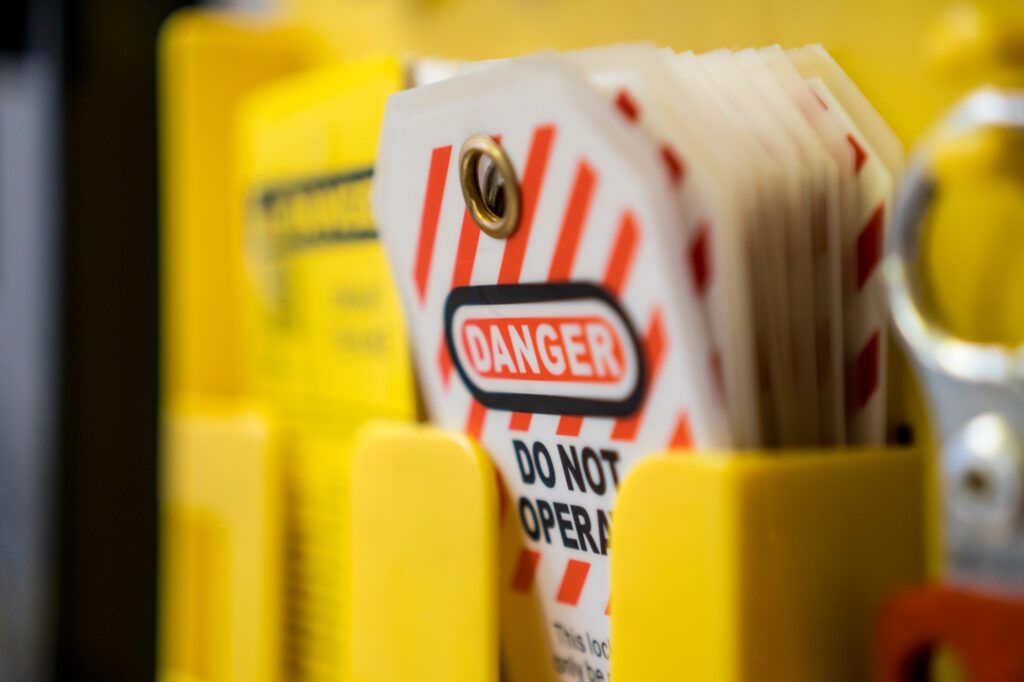Lockout/Tagout exists to prevent unexpected start up of the equipment or energy to prevent injury to the employee while servicing.
Lockout-tagout (LOTO) or lock and tag is a safety procedure which is used in industry and research settings to ensure that dangerous machines are properly shut off and not started up again prior to the completion of maintenance or servicing work. A disconnect switch, circuit breaker, manually operated valve, blind flange and any other device used to ensure that power or energy can not flow to a piece of machinery or equipment all come under this procedure.
Energy sources including electrical, mechanical, hydraulic, pneumatic, chemical, thermal or other sources in machines and equipment can be hazardous to workers. During the servicing of machines and equipment, the unexpected start up or release of stored energy could cause injury to employees. Proper Lockout/Tagout (LOTO) practices and procedures safeguard workers from the release of hazardous energy. The OSHA standard for The Control of Hazardous Energy(Lockout/Tagout) (29 CFR 1910.147) for general industry, outlines specific action and procedures for addressing and controlling hazardous energy during servicing and maintenance of machines and equipment.

